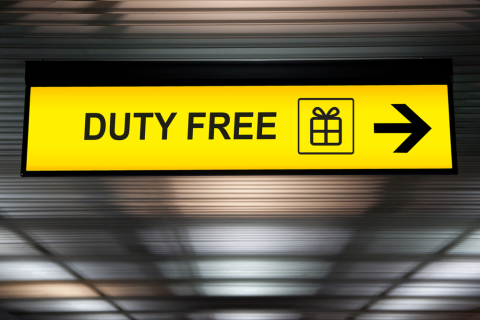Advertisements
Back to our Blog
Everything You Need To Know About The Latest Liquid Rules 2025
Daniel Riley April 16th, 2025 4,889 views

Airport Security. Picture Credit: Canva
As UK airports continue to modernise their security procedures, a major change has been introduced regarding the handling of electronic devices and liquids at security checkpoints. Passengers travelling through certain airports will soon enjoy a much smoother and more streamlined security experience, thanks to the introduction of advanced Computed Tomography (CT) scanners. These new scanners are set to revolutionise air travel, particularly in managing liquids and electronic items in hand luggage.
What Are the New CT Scanners and How Do They Affect You?
CT scanners, which have recently been installed at several UK airports, create 3D images of hand luggage, allowing security personnel to inspect the contents without needing passengers to remove electronic items such as laptops and tablets. This means that passengers will no longer have to take these items out of their bags when going through security, helping to speed up the process.Perhaps even more significantly, the new approach to liquid items means that passengers no longer need to place liquids in containers of no more than 100ml in clear plastic bags for inspection. With the new CT scanners, liquids up to 100ml can stay inside your bag, eliminating the need for the usual packing ritual.
Which UK Airports Have Already Installed the New Scanners?
Several airports have already completed the installation of the new CT scanners, reaping the benefits of quicker, more efficient security checks. Teesside, London City, and Birmingham airports were among the first to meet the government’s deadline for installation. Other airports, including Aberdeen, Edinburgh, Leeds Bradford, Luton, Newcastle, and Southend, have also rolled out the new scanners, meaning passengers at these airports can leave electronic and liquid items (within the 100ml limit) inside their hand luggage.Which Airports Are Yet to Fully Install the New Scanners?
Not all airports in the UK have fully installed the new CT scanners yet. Several airports, including Glasgow, Glasgow Prestwick, Heathrow, Manchester, Norwich, Southampton, and Stansted, are still in the process of rolling out the new technology.Manchester Airport is working according to the government’s timelines, with the new scanners already installed in most of its lanes. A spokesperson from Manchester Airport stated, "The scanners are already installed in the majority of our lanes, and most of the time, if you’re passing through, you’ll end up in one of the new lanes, meaning you won’t have to remove liquids, electronics, etc."
However, as Manchester has only partially rolled out the new scanners, passengers travelling through this airport are still advised to place liquids in plastic bags and remove electronic items from their bags until the installation is fully complete.
When Will the 100ml Liquid Restrictions Change?
While the new CT scanners theoretically allow passengers to carry liquids of up to two litres in their hand luggage, a delay in regulation has meant that the 100ml liquid rule remains in place for now. The 100ml liquid restriction at UK airports is set to be lifted in June 2025, allowing passengers to carry liquids up to two litres, provided airports have installed the advanced CT scanners.At the ABTA Aviation Forum in London, Michael Stark, Deputy Director for Aviation, Commercial, Strategy, and Consumers at the Department for Transport (DfT), stated, “I can’t wait for the liquid restrictions to be lifted. The liquid restrictions still remain in place. The liquid deadline is in June, but I can’t comment on the progress.”
Until the regulations are officially lifted, passengers should continue to only travel with liquids up to 100ml in their hand luggage.









